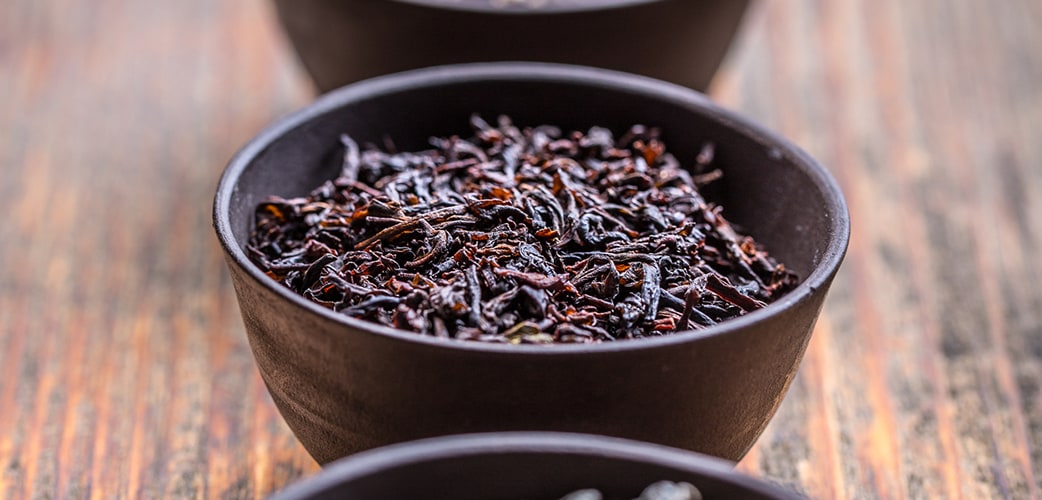What is black tea?
Black tea is an infusion made from leaves and leaf buds. The plant parts are harvested from the tea bush
Camellia sinensis (China) or
Camellia assamica (India) or from hybrids of the two. Black tea is a popular beverage all over the world and, alongside
green tea, the most commonly available variety of tea. Whether pure or with added flavours, it has the greatest selection on offer worldwide. Black tea is also particularly important to EILLES TEE, so take a minute to browse our offering at your leisure.
What effect does black tea have?
In general, black tea has a gradual, invigorating effect. The effect is long-lasting in comparison and tapers off again slowly. The effect of black tea depends on how long the tea is steeped for among other factors.
Due to the tannins, the caffeine in black tea takes longer to enter the bloodstream and the effect lasts for longer than with the caffeine contained in coffee. In addition, each variety of tea has a different effect, which is determined by the brewing time and quantity of tea.
Caffeine is an important constituent of black tea. Black tea also contains secondary plant substances (theaflavins) and tannins, vitamins and trace elements. Unlike in coffee, the caffeine in tea is bonded with tannins and thus enters the central nervous system via the small intestine.

Is there a difference between black tea and green tea?
Yes. Black tea is
fermented, meaning its leaves are oxidised as described above.
Green tea is not fermented; it is
steamed after being picked. The tea plants are not different;
Camellia sinensis (China) and
Camellia assamica (India) are used for both black tea and green tea.